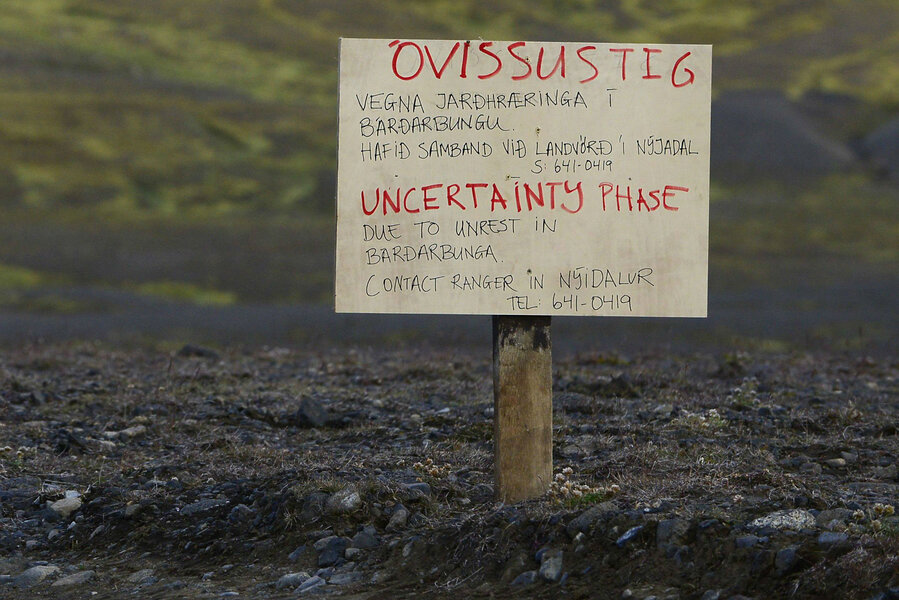Iceland volcano: Code Red warning issued for aviation
Loading...
| Reykjavik, Iceland
Iceland's Meteorological Office says a subglacial eruption is underway at the Bardarbunga volcano, which has been rattled by thousands of earthquakes over the past week.
The office reports that a 4.5 magnitude earthquake occurred Saturday afternoon local time. On Friday, the Met Office reported:
One earthquake of magnitude 4.7 was measured in the Bárðarbunga caldera at 4 km depth yesterday evening at 23:50. This large event was at similar location as earthquakes of magnitude larger than three that were seen yesterday. Large events in Bárðarbunga are interpreted as adjustments of the caldera rim related to decompression in the caldera since the beginning of the unrest. The activity continues and an eruption can therefore not be ruled out.
Vulcanologist Melissa Pfeffer said seismic data indicates that lava from the volcano is melting ice beneath the Vatnajokull glacier. She said it was not clear when, or if, the eruption would melt the ice and send steam and ash into the air.
Minutes earlier, Iceland raised its aviation alert for the volcano to the highest level of red on Saturday, indicating an eruption that could cause "significant emission of ash into the atmosphere." Red is the highest alert warning on a five-point scale.
Scientists had planned to fly over the glacier later Saturday to look for changes on the surface but it was not clear if that would still take place.
Authorities had evacuated several hundred people earlier this week from the highlands north of the Vatnajokull glacier as a precaution. The area is uninhabited but popular with hikers.
Iceland sits on a volcanic hot spot in the Atlantic's mid-oceanic ridge and eruptions have occurred frequently, triggered when the Earth's plates move and when magma from deep underground pushes its way to the surface.
A 2010 eruption of the Eyjafjallajokul volcano produced an ash cloud that caused a week of international aviation chaos, with more than 100,000 flights cancelled. Aviation regulators since have reformed policies about flying through ash, so a new eruption would be unlikely to cause that much disruption.
Pfeffer said the amount of ash produced would depend on the thickness of the ice.
"The thicker the ice, the more water there is, the more explosive it will be and the more ash-rich the eruption will be," she said.
Earlier this week, scientists said there are two likely scenarios:
One is an explosion outside the Vatnajokull glacier, leading to minor ash emissions and troubles locally. The second possibility is an eruption occurring inside the glacier. Seismologist Martin Hensch says the latter could lead to ash being sent high into the atmosphere.
Met Office seismologist Martin Hensch said the risk of any disruptive ash cloud similar to the one in 2010 would depend on how high any ash would be thrown, how much there would be and how fine-grained it would be.
Bardarbunga is Iceland's largest volcanic system, located under the ice cap of the Vatnajokull glacier in the southwest of Iceland. It is in a different range to Eyjafjallajokull.







